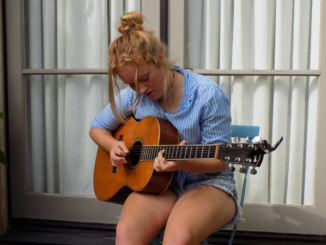
India Pearman
Features Editor
Eight Mira Costa film students embarked on a trip from Feb. 17 to 24 to Cuba to create documentaries focusing on Cuban culture.
Cinema and Broadcast Journalism teacher Michael Hernandez accompanied the Advanced Film and Broadcast Journalism students and led them around Havana, Cuba. While there, students worked on filming a total of four documentaries in pairs, each with a different focus. The documentaries focus on topics from music, food and produce, art and cars. Each will be about six minutes long.
“Several years ago, I was working with my students and realized that their perspective of the world was very narrow,” Hernandez said. “I felt that I had taught my students how to tell stories, but the stories that they were telling weren’t as diverse and deep as they could be. The point of these trips is to give students the chance to experience living history, so that the things that they are learning in school really comes alive.”
The preparation for the trip began two weeks before leaving, and each pair had to come up with an idea that would be the basis of their documentary and get their proposal approved by Hernandez. They also created interview questions for locals and planned out their B-roll, shots used as transitions throughout the documentaries.
“It’s a very unique experience to look someone in the eye and hear about their hopes and dreams face to face, rather than in an abstract form of in a textbook,” Hernandez said. “When you go to a place and you smell their air, taste the food and you hear the voices, it has a much more profound, personal impact on you, as far as your understanding of other people and other places.”
The trip took place for eight days over February break, and by the end of the trip, the group had seven full days of footage. They would start their days at 6 a.m. and often end at 10 p.m., sophomore Shae Martinez said. They interviewed a variety of people including local farmers, artists, musicians and bands. For some interviews, students used a translator in order to communicate effectively with the locals, as not all students spoke spanish.
“My favorite part was meeting the people because the people in Cuba were surprisingly welcoming,” Martinez said. “The people were nice, and really flexible, and let us interview them.”
The group brought equipment including various cameras, microphones and tripods. After shooting each day, they imported all of the footage and organized it using Final Cut Pro to edit. While they are still in the editing stage of the process, they have began selecting the most important shots and finding sound and music for the background. Their next step in the editing process is piecing all of the shots and sound together.
“The documentaries are a way for us to have the students synthesize their experiences with one another and also a way to tell the story to other people when they come home from the trip,” Hernandez said.
The documentaries will be completed in late May and will be available to watch on Mira Costa’s Media Arts website. Hernandez is planning on taking another group of students to Cambodia next year. The trips visit developing nations that have a troubled history with U.S. foreign policy in order for students to see the ramifications of the United States’ actions, Hernandez said.
“I teach my students how to tell stories, and that’s important, but the most important thing for me is to teach my students how to have empathy for other people and to understand that our way of life isn’t the only one, and not necessarily the right one,” Hernandez said.




Leave a Reply